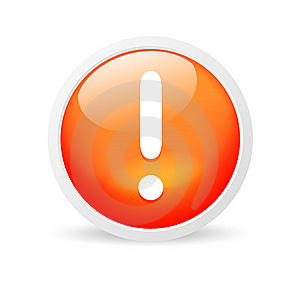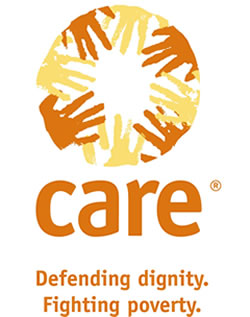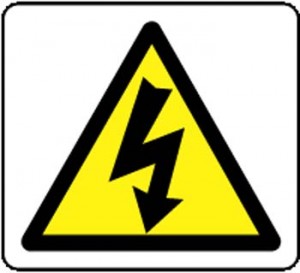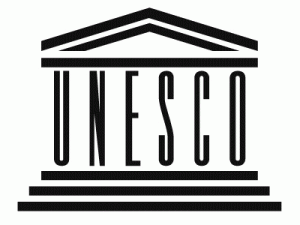When considering educational health messages on radio – I often wonder whether NGO’s would be justified to employ more provocative approaches to “shock” the listeners into paying attention…
Educational spot production for radio has traditionally followed a didactic style of delivery. These often feature a presenter, typically in a studio environment, reading a script to the audience. However, in western radio creative approaches are far more varied and can often challenge the listener preconceptions of “taste” in order to capture their attention.
This post considers the use of “shocking” spots when creating development spots – and draws from my experiences as a spot producer in Ethiopia while working as a consultant for the BBC World Service Trust in 2006.
Several of the pre-tested spots for the BBC World Service Trust were far more shocking than the traditional spots heard on Ethiopian radio. Although they tested well with the focus groups and received praise from an advisory panel of NGO’s, they were vetoed by the BBC World Service Trust’s head office in London, unfortunately without explanation.
It’s my belief that challenging spots are a valuable, possibly even necessary, method of drawing attention to a serious health issues. However, it’s clearly a contentious approach…
McLeish (1999) shares similar opinons to many NGO’s (such as UNESCO and USAID) who view that messages should be culturally sensitive and not gratuitous. However, McLellan (2005) is more forthright, challenging NGO’s to “be bold”, take risks and push limits.
 It’s interesting to assess how other organisations view the use of “shock tactics”. The British Central Office of Information uses many forms of media in order to disseminate health messages, including various forms of broadcast radio. I asked Brian Jenkins, Head of Radio for the COI, whether he felt the use of “shock” was an acceptable creative approach.
It’s interesting to assess how other organisations view the use of “shock tactics”. The British Central Office of Information uses many forms of media in order to disseminate health messages, including various forms of broadcast radio. I asked Brian Jenkins, Head of Radio for the COI, whether he felt the use of “shock” was an acceptable creative approach.
“As an organisation we’re not setting out to shock and offend people”.
“We want to engage with our audience and don’t forget, the Government represents everyone in country – everyone pays tax – everyone in the country’s one of our stake holders and we don’t wish to offend people.” (Interview)
Jenkins continued to discuss the theme of shocking the audience and mentioned the difficulty of pleasing a wide cross section of public, with differing tastes and levels of acceptability.
“Any campaign which is touching on certain areas that are taboo to certain people is going to be difficult. And that isn’t just sexual health. It could be do with drug taking, alcohol abuse… They’re very sensitive (issues). We have a bunch of social issues in this country, sex education is just one of them, where half the public are saying “People need to know more about it”… And half the public are saying “But don’t tell us about it”… And we have to be sensitive to that. So… it’s a challenging one and I think the jury is out whether we’ve succeeded. But of the work we have produced here in the last ten years, some of those campaigns (HIV/AIDS) are some of the ones I’ve been most proud of.” (Interview)
Another interviewee with a commercial background was Farrukh Naeem, an advertising copywriter and journalist, based in Abu Dhabi, UAE. I asked Farrukh whether he felt shock was a reasonable creative technique to employ.
 “If you’re shocking to get attention – that is the advertising model. The conventional A.I.D.A. model where attention is the first thing you need to do before you have you have interest, desire and finally action. So yes, shock to get attention or notice – I’m fine with that. That’s not a problem. But shocking someone by hitting him emotionally or putting him down. For example, being a racist in your copy. That’s also shock – but it’s offensive as well. If you’re an advertiser nobody ever gives you right to offend people. You can challenge them, you can start a debate, you can disagree with people, but I don’t think any good is achieved by being offensive or rude.” (Interview)
“If you’re shocking to get attention – that is the advertising model. The conventional A.I.D.A. model where attention is the first thing you need to do before you have you have interest, desire and finally action. So yes, shock to get attention or notice – I’m fine with that. That’s not a problem. But shocking someone by hitting him emotionally or putting him down. For example, being a racist in your copy. That’s also shock – but it’s offensive as well. If you’re an advertiser nobody ever gives you right to offend people. You can challenge them, you can start a debate, you can disagree with people, but I don’t think any good is achieved by being offensive or rude.” (Interview)
These interviews, as well as the opinions of other western advertising experts, seemed to show that there were certain situations where shocking was justified, as long as it didn’t offend. Provoking a listener’s sense of decency was thought to be unnecessary and often counter productive.
I asked a series of similar questions to a cross section of representatives from the field of development, in order to gather their opinions on the topic of shocking listeners.
Selam Ayalew, an audience researcher for the BBC World Service Trust, commented that although her own standards of decency were challenged in regards to the programme they produced, she believed that it was necessary for Ethiopians to be confronted in this manner.
“Personally it was too much. The issues that were covered in our programmes were too much. The perception of the society is I think “too young” to accept such kinds of issues. Even for us, some of my colleges who are here, when we hear some of the issues that are covered in our programmes – it’s so shocking. But we can not hide from that. We believe that it has to be broadcasted to the general public. But it might be too early for the society to accept such kinds of facts.” (Interview)
Audience Research Executive for the BBC World Service Trust, Solomon Amare, had no doubt about the need for more challenging styles of educational health messaging on Ethiopian radio.
“I want radio messages to be highly provocative so that they can ignite discussion and debate among young people.” (Interview)
 Kaylois Henry who worked as Project Manager for the BBC World Service Trust in Ethiopia commented that the organisation was particularly interested in research relating to “shock and controversy”. I posed the hypothesis that given the severity of the HIV/AIDS problem in Ethiopia, a more drastic form of messaging was required. However, the BBC World Service Trust was reluctant to broadcast more challenging spots as they risked upsetting their funding donors along with the broadcasting organisations who might transmit these messages.
Kaylois Henry who worked as Project Manager for the BBC World Service Trust in Ethiopia commented that the organisation was particularly interested in research relating to “shock and controversy”. I posed the hypothesis that given the severity of the HIV/AIDS problem in Ethiopia, a more drastic form of messaging was required. However, the BBC World Service Trust was reluctant to broadcast more challenging spots as they risked upsetting their funding donors along with the broadcasting organisations who might transmit these messages.
“I don’t get the feeling that we shy away from controversy. In fact, we’ve been embracing it a little too much. I think there’s a difference between shocking for the sake of shocking, which we’ve got to be careful of, and shocking because that’s the best way to do the message. I think that if a spot was made that was very shocking, if it tested well, it doesn’t matter if people “like it” or not. It’s basically, do you remember it? What’s that message at the end of it? Then we’d use it… That’s how we look at the testing. Shocking is ok… But we don’t want to be offensive and that’s the line that we draw. So if the language is shocking… tough.” (Interview)
In order to gain a wider overview of spot production in Ethiopia, I interviewed subjects from other development organisations working on similar health related spot production in Ethiopia.
 Francesca Stuer is the Country Director of Family Health International based in Addis Ababa. Stuer believes that shock tactics, or “negative communication” as she calls it, have dangerous long term consequences. Although the technique might provoke an immediate response, in Stuer’s experience, such methods create negative perceptions that contribute to increased stigma and fear.
Francesca Stuer is the Country Director of Family Health International based in Addis Ababa. Stuer believes that shock tactics, or “negative communication” as she calls it, have dangerous long term consequences. Although the technique might provoke an immediate response, in Stuer’s experience, such methods create negative perceptions that contribute to increased stigma and fear.
“In general we try to make sure that messages only have a positive connotation. They’re fun, attractive to listen to. A shock tactic would be more about the creativity rather compared to the didactic nature of most communication on radio and television.” (Interview)
I questioned Benjamin Chesterton, former Head of Project for the BBC World Service Trust, about Stuer’s opinion that shocking listeners created stigma and fear amongst the audience.
“It depends how you do it. You may say “it creates stigma”. But perhaps it’s been done badly? The fact they’ve simply closed the door on this approach is a travesty. Closing the door on “shock” means they’ve actually closed the door on the truth. People do need to be aware that AIDS in most developing countries will kill you very quickly. While it’s important not to fear the people that have it – they need to fear catching it. Beyond that, what I would say is just because you haven’t been clever enough or experienced enough to create campaign that creates fear without stigma, which has to be the best possible scenario, doesn’t mean it can’t be done. It certainly doesn’t mean there should be this blanket ban on “negative communication”. (Interview)
Chesterton also commented on what he perceived to be an NGO culture of hyper-sensitivity towards the use of certain words that various organisations judged to create stigma.
“The United Nations and most NGO policies state that you should never use the language of describing a person as “suffering from AIDS”. Because “suffering” is a negative word. It’s just absurd.” (Interview)
CARE International has had a presence in Ethiopia since 1985. I asked Project Manager Feven Tassew about their approach to health related messages.
“Ethiopians are very culturally sensitive. It’s not even uniform… when you go from one area to the other it’s totally a different context that you are facing. So, being culturally sensitive is very important for the audience to really get the real message. When we started to talk about HIV and AIDS there was actually a misunderstanding with the community groups because HIV and AIDS used to be associated with something scary – which was not useful at all.” (Interview)
 Dawn Wadlow, the overall Program Director of CARE Ethiopia, held the belief that every culture had a different way of hearing messages.
Dawn Wadlow, the overall Program Director of CARE Ethiopia, held the belief that every culture had a different way of hearing messages.
Wadlow was not convinced that “shock treatment” for HIV/AIDS messages would work particularly well in Ethiopia.
I mentioned this opinion to Research Executive Solomon Amare from the BBC World Service Trust.
“That’s probably right, because there are many things that are more shocking in Ethiopia than HIV. With this amount of poverty and oppression – people have already been shocked enough! Shock has always been part of their life.”
“So there is no question about shock tactics failing in this country. Research has confirmed that shock messages are ineffective in Ethiopia.” (Interview)
It would seem that most NGO’s are reluctant to use of unnecessarily challenging messages to “shock” listeners of out of perceived apathy in an attempt to successfully deliver educational health messages. In an internal report from BBC World Service Trust to the World Health Organisation, radio producer Charles Hamilton (profiled in the “Experts” section of this website) outlines the need to produce educational spots that don’t offend the public and are both factual and honest. This is especially true for charitable organizations who often derive considerable revenue from public donations and don’t wish to risk potential contributions.
The USAID’s production guide (2005) comments that as a general rule, radio producers should discard a spot if research reveals there are significant negative comments from the general public. However, In McLellan’s 2005 report “HIV/AIDS Programming for Rural Audiences – Broadcast Training”, he discussed the need to “be bold in taking risks and pushing limits”. For instance, he believes that it is impossible to deal effectively with HIV/AIDS without discussing sex openly and frankly. While he admits that “broadcasters might take a little heat” for challenging listeners, he argues that this approach can be justified as it is for the greater good of the country and ultimately saves lives.
A 2009 UNAIDS report estimated that more than 25 million people have died of AIDS since 1981. McLellan contends that this tragedy has been aided by what he calls “a conspiracy of silence” that has allowed HIV to infect and kill millions of people around the world.
McLeish (1999) tends to reflect the more restrained view of USAID, who believe the broadcaster’s role is to refrain from creating confrontation and dissent where there was previously none.
In a UNESCO produced community radio handbook (2001), guidelines were provided to help address issues of potential controversy;
“Justifiable material that relates to brutality, violence, atrocities, drug abuse and obscenity should be presented with due care and sensitivity and always in context, not gratuitously.”
HIV/AIDS spots have been part of the African Media Landscape for at least ten years. It could therefore be argued that Ethiopians have become to an extent desensitised to the impact these messages currently have. It’s perhaps not surprising that many of the respondents to a BBC World Service Trust survey could clearly recall the impact of those initial messages almost a decade ago – but could not recall the messages contained in many recent campaigns. Perhaps more dramatic messages are required to break through this apparant apathy?
In conclusion, although there is clearly an appetite for creative, innovative spots which capture the listener’s attention, the process of spot creation certainly needs to be handled carefully. The use of locals in the scripting and production process is an important factor in ensuring that messages do not offend cultural sensitivities.
One of radio’s strengths is its ability to make listeners question their existing preconceptions… However, spot production can easily over-step the line between informed provocation – and outright offence.
Development radio must recognise local customs and culture while at the same time – employ new editorial values to help challenge and push forward the boundaries of traditional radio…
References:
McLeish, Robert (1999) Radio Production Focal Press, Woburn MA, USA
McLellan, Iain, (2005) HIV/AIDS Programming for Rural Audiences – Broadcast Training, Published online by the “Farm Radio” development organisation



